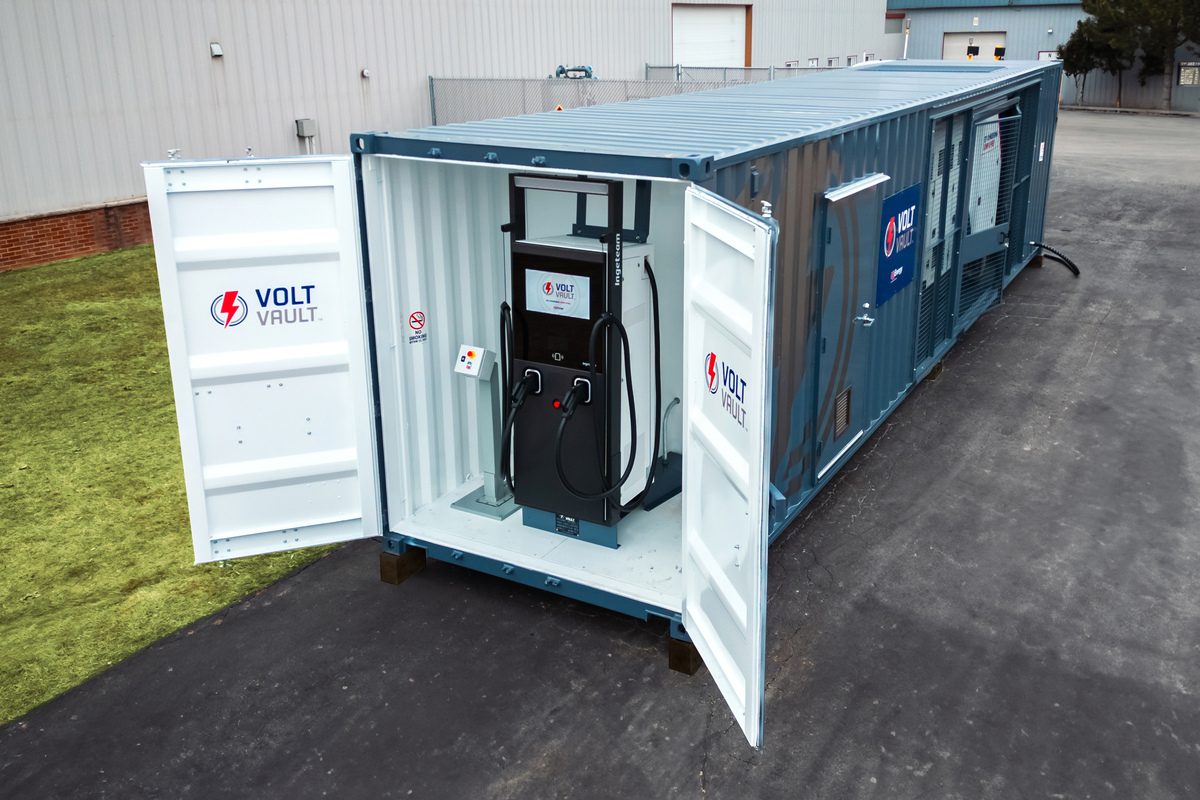Ready, set, electrify! For many, the race to electrification is on as state and federal EV implementation targets draw near. As more organizations work toward the finish line, they can quickly find hidden costs accumulating if their team doesn’t plan (and communicate) appropriately.
Evaluate Your Options: Find a Better Way
While electric charging is new to many, the concept of electricity is not. We rely on it daily to light our homes, run appliances, power electronics, and countless tasks in between. For all those activities, we depend on the grid and local utilities. It’s no surprise that as a result, many EV charging strategies start down the pathway of a grid-based charging solution. For some, because it’s what they’re familiar with. But for most, because they believe it to be their only option.
Grid-Based Charging Infrastructure
With a grid-based solution, organizations rely on their local utility to perform necessary upgrades before charging can begin: a process that can average nine to 24 months. You can also expect construction costs and disruptions to your lot as chargers are installed. Taking into account these delays, it’s likely your EVs may be delivered before infrastructure is complete — meaning you’re paying for vehicles you can’t use.
A common question when charging begins is: What can I expect to pay per kilowatt hour? This is where things get complicated and where hidden costs can pop up. While commercial rates vary by state, the cost you’ll pay is often much higher. In California, fleets could expect to pay as high as $0.40/kWh after state tariffs are added onto their base rate.
Additionally, when charging with a grid-based solution, EVs are subject to two charges: time-of-use and demand charges. The first is exactly as it sounds. What time you charge your fleet determines how much you pay. While you may be able to adjust your charging to better align with off-peak hours (when rates are lower), sometimes you won’t have a choice. Demand charges on the other hand consider your peak electricity requirement during a set period, charging you for how much electricity you could have used rather than the amount you did. This is so utilities can generate and distribute enough electricity to meet your needs alongside their other ratepayers. If you don’t operate on fixed duty cycles and your charging is inconsistent, demand charges can increase your kilowatt hour rate.
While you can adjust some behaviors to manage these charges, there is one hidden cost that is beyond your control: grid outages. Whether for a few hours, days, or weeks, grid brownouts and blackouts mean you cannot charge your fleet. For many, downtime is not an option.
When you look at these charges, the costs can accumulate quickly. So, what can you do? It’s time to consider that grid-based charging solutions are not your only option.
Off-Grid Charging Alternatives
That’s right. You can implement EV charging today, without reliance on the grid or your local utility. How? With off-grid solutions like Volt Vault.
For grid-based charging infrastructure, you have to wait at least nine to 24 months. With Volt Vault, you can reduce that to four months: from the start of manufacturing through commissioning and permitting. Volt Vault disrupts what many believe to be true about EV charging. As it’s not connected to the grid, Volt Vault eliminates the above hidden costs. The difference is that it’s supplied by pipeline renewable or compressed natural gas rather than being a battery solution. Unlike electrical rates, natural gas prices don’t experience the same volatility. Here, the price you see (which can be as low as $0.14/kWh with the pipeline configuration) is the price you’ll pay.
Since you aren’t connected to the electrical grid, you’re also not impacted by external factors such as grid outages and demand and time-of-use charges. With onsite, on demand electricity production, you can ensure your charging needs are met — without impacting your budget or risking downtime.
And as your charging needs expand, you don’t have to worry about ongoing engagement with utilities, site disruptions, or compounding construction costs. Volt Vault is a re-deployable charger, meaning as long as you have an open space on your lot, you can easily scale your purchase or relocate your units where and when needed.
Which Option is Best for Your Fleet?
Whether you’re pursuing a grid-based or an off-grid charging solution, both can help support your electrification goals. The difference lies within the hurdles you will face (or the ones you’ll avoid) along the way. From your daily operations to your budget planning, be sure to consider the costs and wait periods before selecting a solution.



